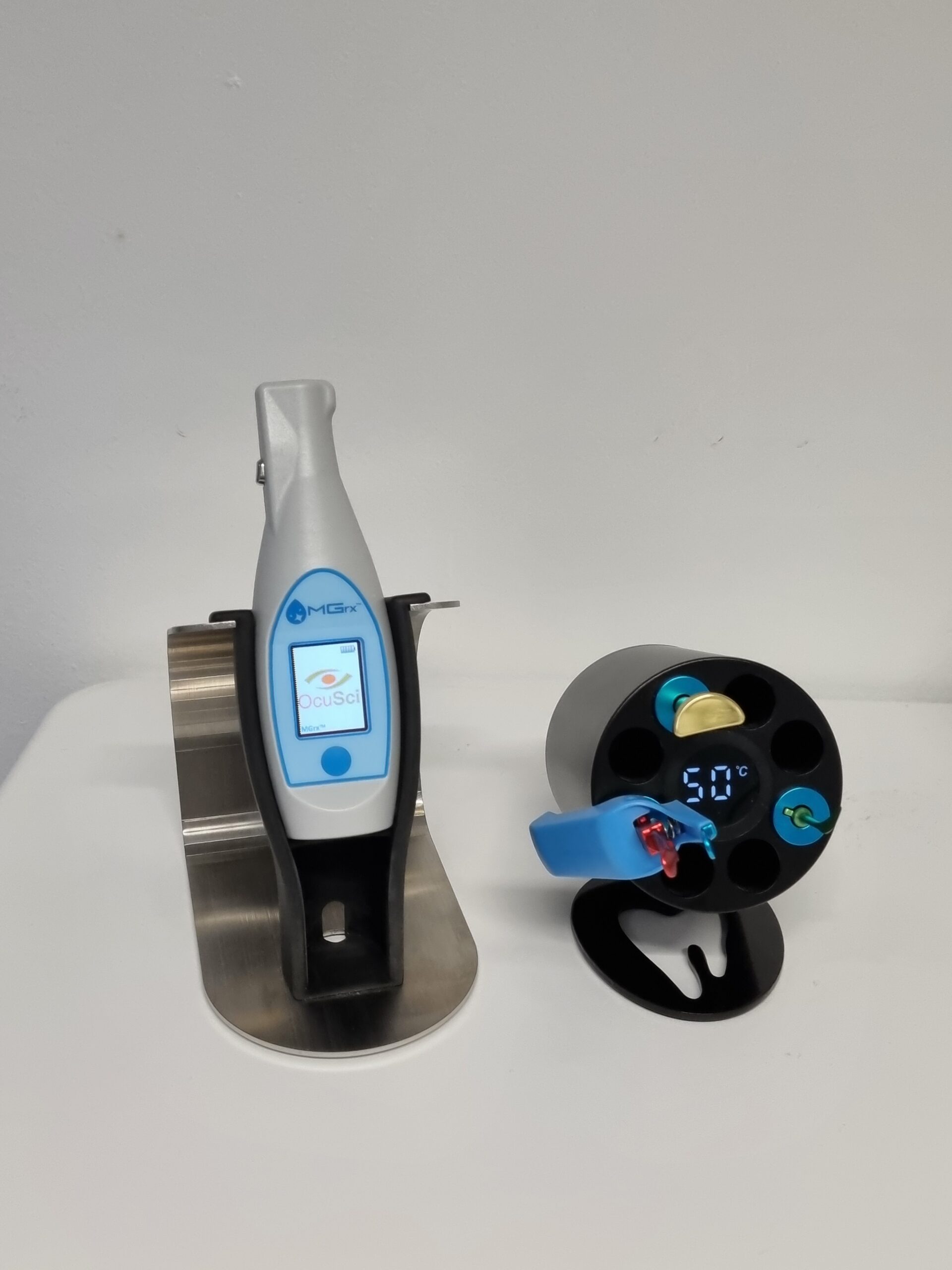
Contrary to what was previously thought, it is increasingly clear from research that the vast majority of cases of dry eye disease are not due to a lack of tears, but due to changes in the complex composition and structure of the tear film. An extensive review of the literature, published in 2017, found that most dry eye is predominantly evaporative in nature, resulting from meibomian gland dysfunction (MGD). The meibomian glands, located within the eyelids, are responsible for producing the oily lipid layer of the tear film – an incredibly thin layer at the outermost surface – which helps to stabilise and protect the tears from evaporation. The lipid layer is only around 50 nanometres thick (about 2,000 times thinner than a human hair) so it is easily disrupted. In MGD, the lipid which the meibomian glands secrete, has a thicker and more granular consistency at body temperature, and so it does not spread evenly over the eye, and can even become completely set, like wax, and unable to be released by blinking.
In order to remain healthy, the meibomian glands must empty their contents onto the eye’s surface. If not, it is believed that pressure can build up, leading to long-term damage and gland loss (termed drop-out). The more gland dropout there is, the more reliant we become on artificial tears, and the more difficult it is to manage our symptoms. This is why eyecare practitioners often recommend warm compresses, lid massage and cleansing (so-called lid hygiene), to melt and express the thickened secretions and help the glands to stay healthy. There are also in-office treatments, which we can perform in the clinic, that can be helpful in more severe cases. Debridement and therapeutic expression help to unblock and empty the glands, often improving symptoms, and also helping to keep them healthy. An anaesthetic is used to decrease the sensation and to loosen the tissue, but it is not the most comfortable procedure. Debridement involves brushing away the dead cells that can cover the openings of the glands. The eyelid then needs to be warmed to turn the wax into a fluid and the glands are squeezed with tweezers to get the oils flowing. This typically takes a few seconds for each set of glands and may require several passes across the glands to get the best effect. Research shows the procedure improves comfort (although the lids may feel somewhat sore afterwards) for at least 2 months and the quality of oil on the ocular surface is generally seen to improve.
References
BILKHU, P., VIDAL-ROHR, M., TRAVE-HUARTE, S., WOLFFSOHN, J. S. J. C. L. & EYE, A. 2022. Effect of meibomian gland morphology on functionality with applied treatment. 45, 101402.
KORB, D. R. & BLACKIE, C. A. 2011. Meibomian gland therapeutic expression: quantifying the applied pressure and the limitation of resulting pain. 37, 298-301.
KORB, D. R. & BLACKIE, C. A. 2013. Debridement-scaling: A new procedure that increases meibomian gland function and reduces dry eye symptoms. Cornea, 32, 1554-1557.
MCMURREN, B. J., KLING, M. A., FASCIANI, A. & NYMARK-MCMAHON, M. H. J. T. O. O. J. 2023. MGrx-A Novel Multi-modal Thermal Device for Treating Moderate to Severe Meibomian Gland Dysfunction and Dry Eye. 17.
MOON, S. Y., HAN, S. A., KWON, H. J., PARK, S. Y., LEE, J. H., CHUNG, H. S., KIM, J. Y., TCHAH, H. & LEE, H. J. B. O. 2021. Effects of lid debris debridement combined with meibomian gland expression on the ocular surface MMP-9 levels and clinical outcomes in moderate and severe meibomian gland dysfunction. 21, 1-9.
NGO, W., CAFFERY, B., SRINIVASAN, S., JONES, L. W. J. O. & SCIENCE, V. 2015. Effect of lid debridement-scaling in Sjögren syndrome dry eye. 92, e316-e320.
SWIDERSKA, K., BLACKIE, C. A., MALDONADO-CODINA, C., FERGIE, M., READ, M. L., MORGAN, P. B. J. C. & OPTOMETRY, E. 2023. Evaluation of Meibomian gland structure and appearance after therapeutic Meibomian gland expression. 1-11.


